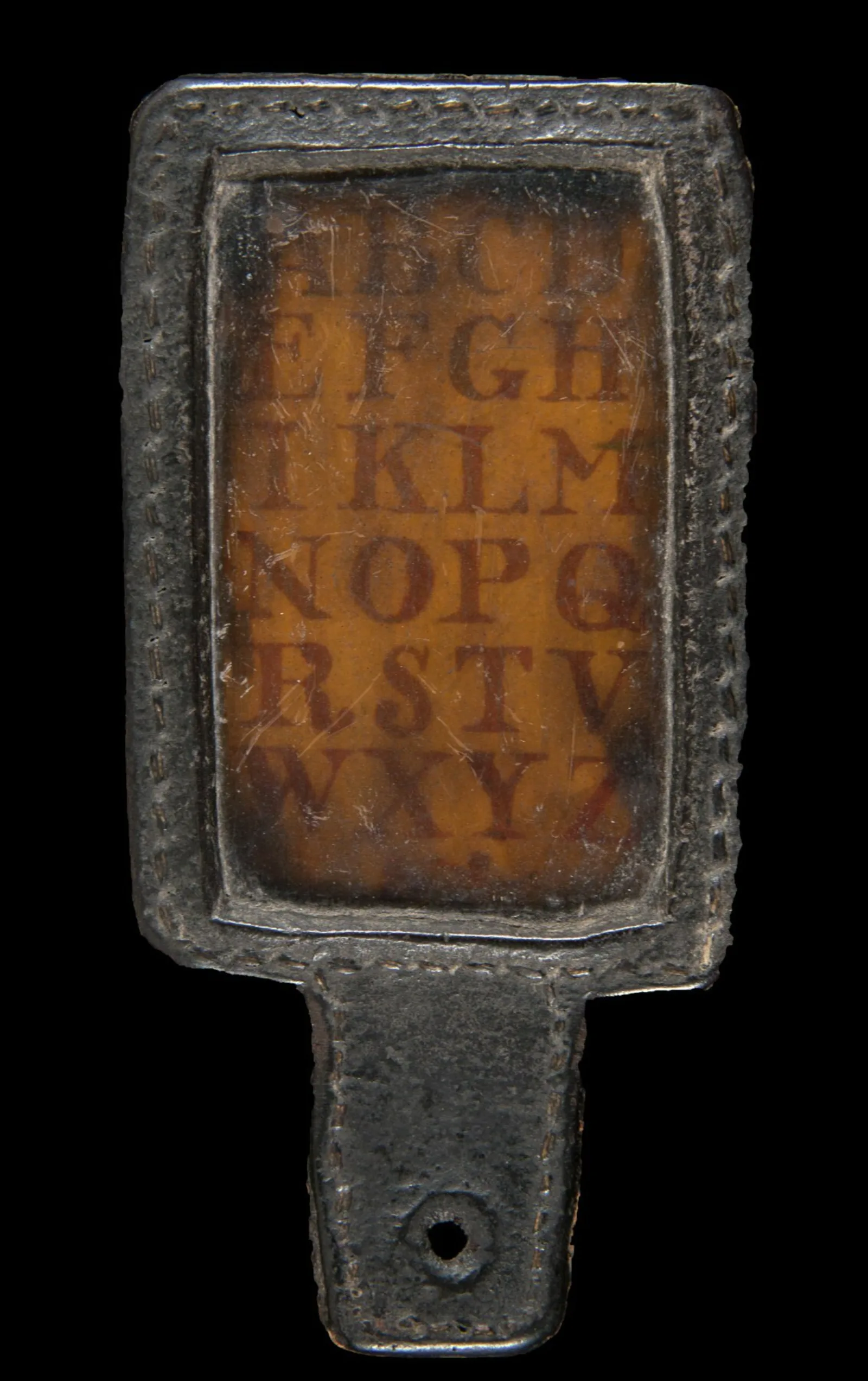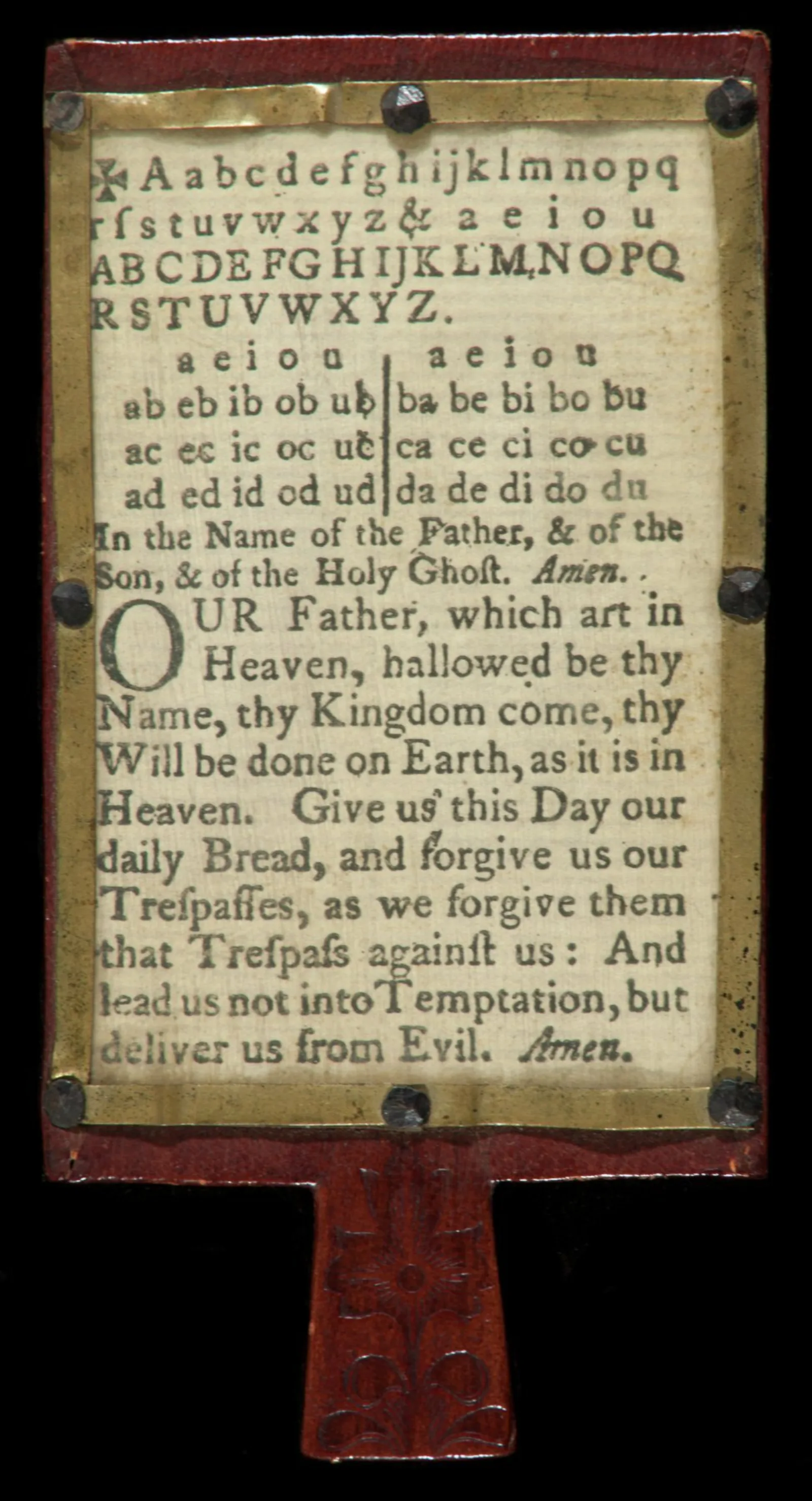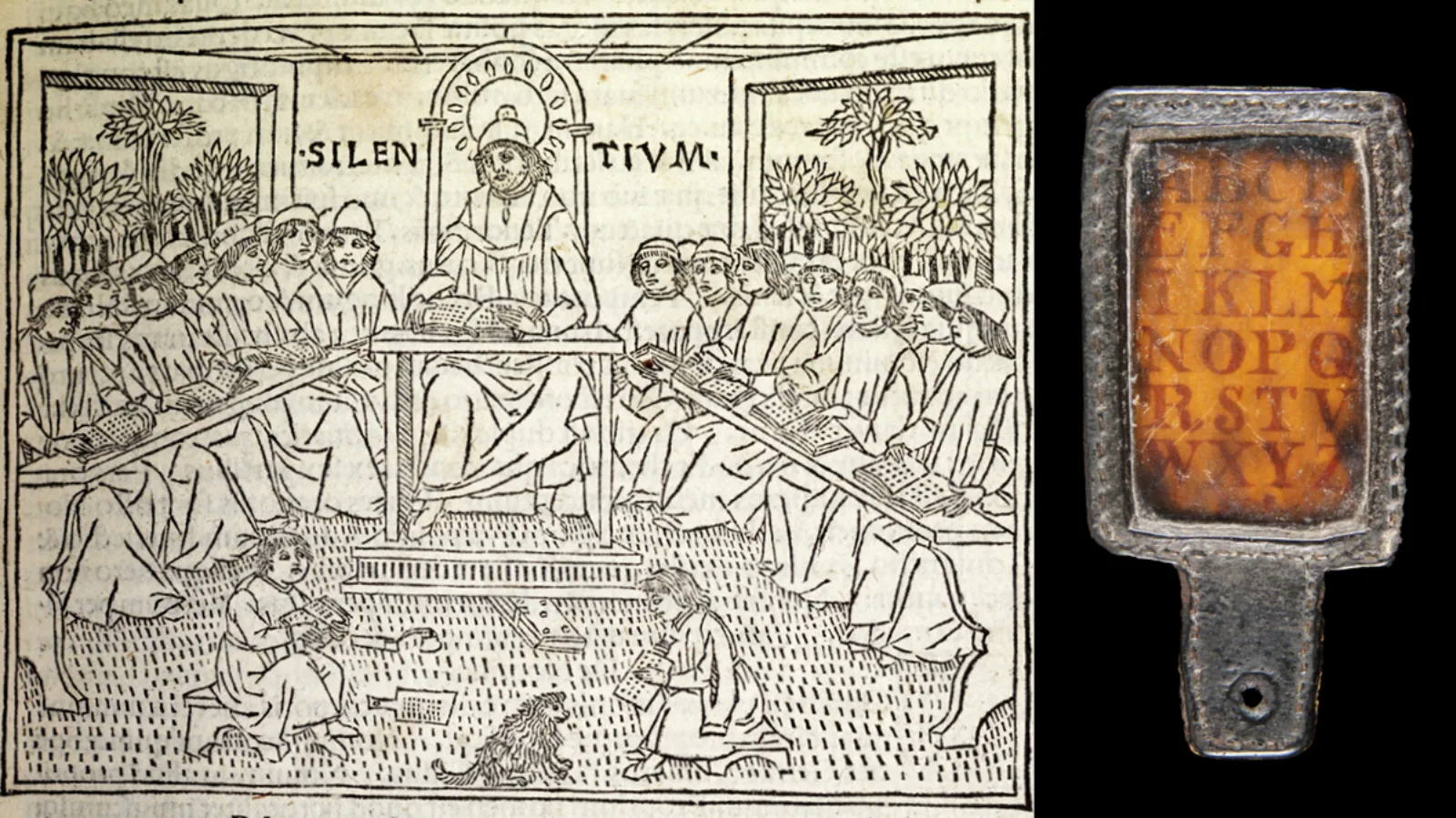Classroom technology has evolved quite a bit since the early modern era in Europe.
Students used to learn to read using hornbooks, wooden boards or paddles covered with a protective screen made from animal horns. Most hornbooks featured a printed or handwritten alphabet on a sheet of paper placed underneath the horn screen (some hornbooks featured religious prayers).
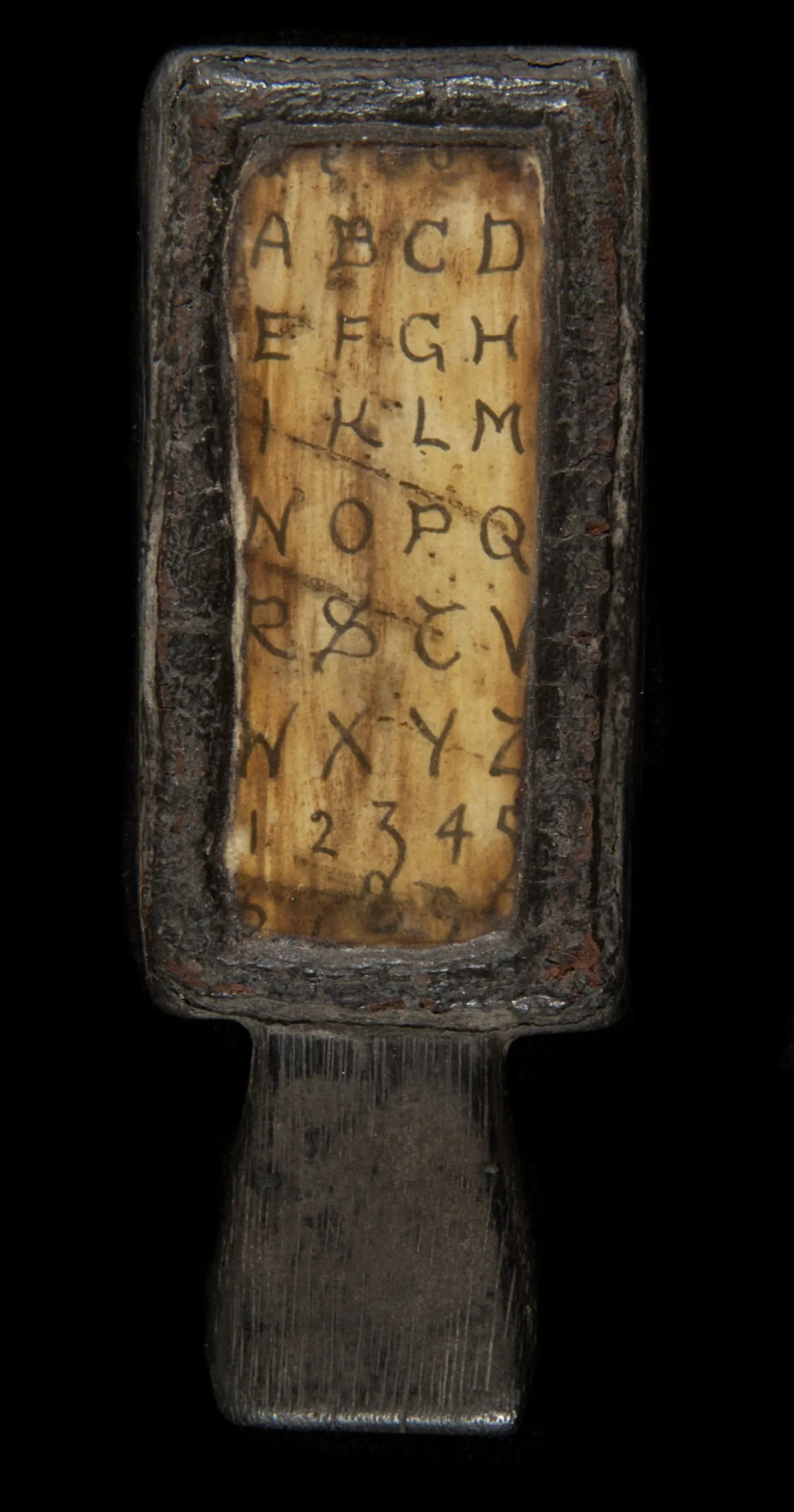
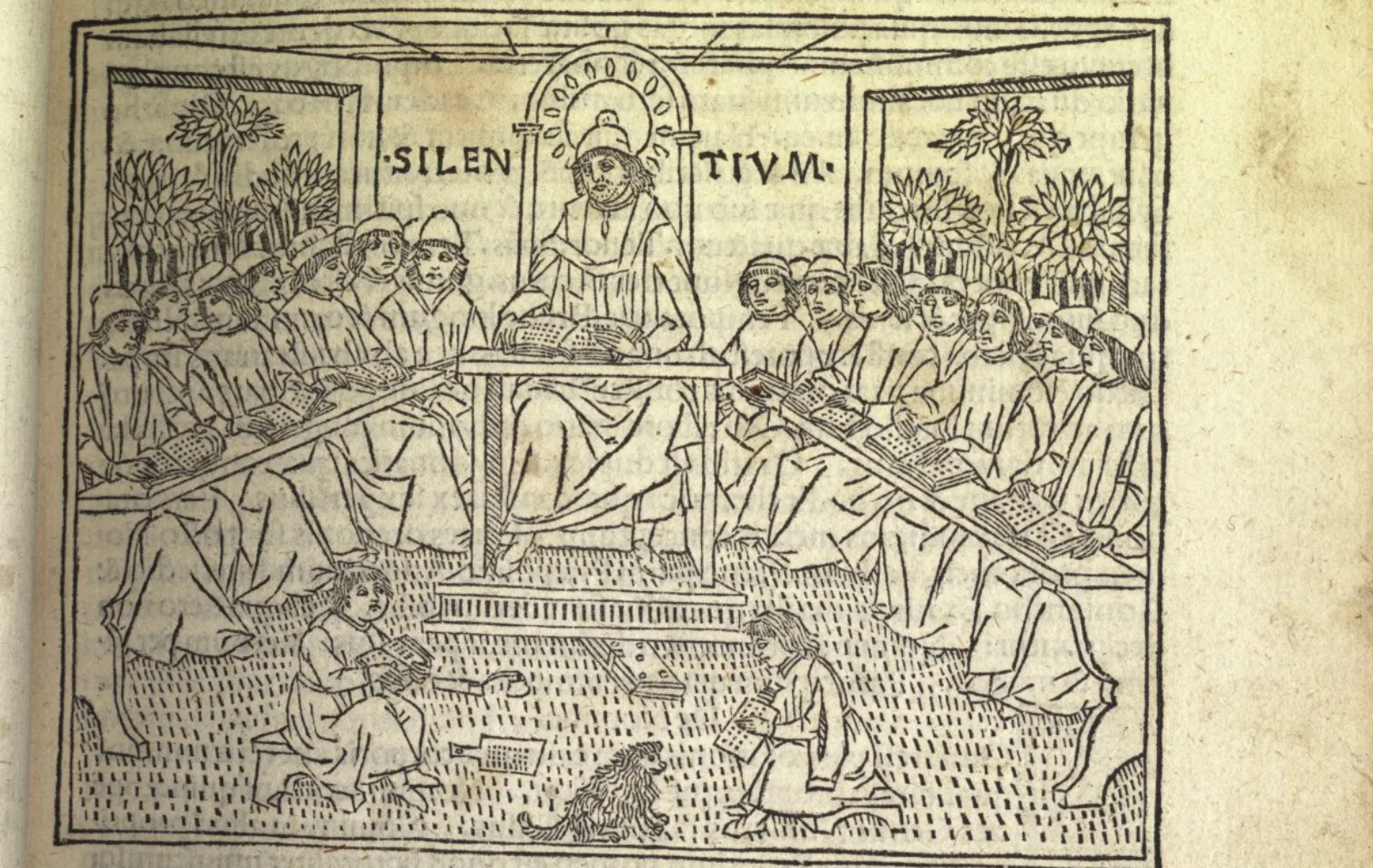
Hand-held and portable, a hornbook might even have a hole for a leather strap that could be attached to one’s waist. Given their shape and mobility, hornbooks can be seen as an early (read: extremely early) version of Kindles and iPads.
We know what you’re probably wondering at this point: were these things really made from animal horns??? Yes (although some weren’t). To make the protective horn covering, a thin piece of an animal’s horn would be soaked in water to separate the layers, then heated to make it transparent.
Hornbooks continued to be used in some parts of England into the nineteenth century.
